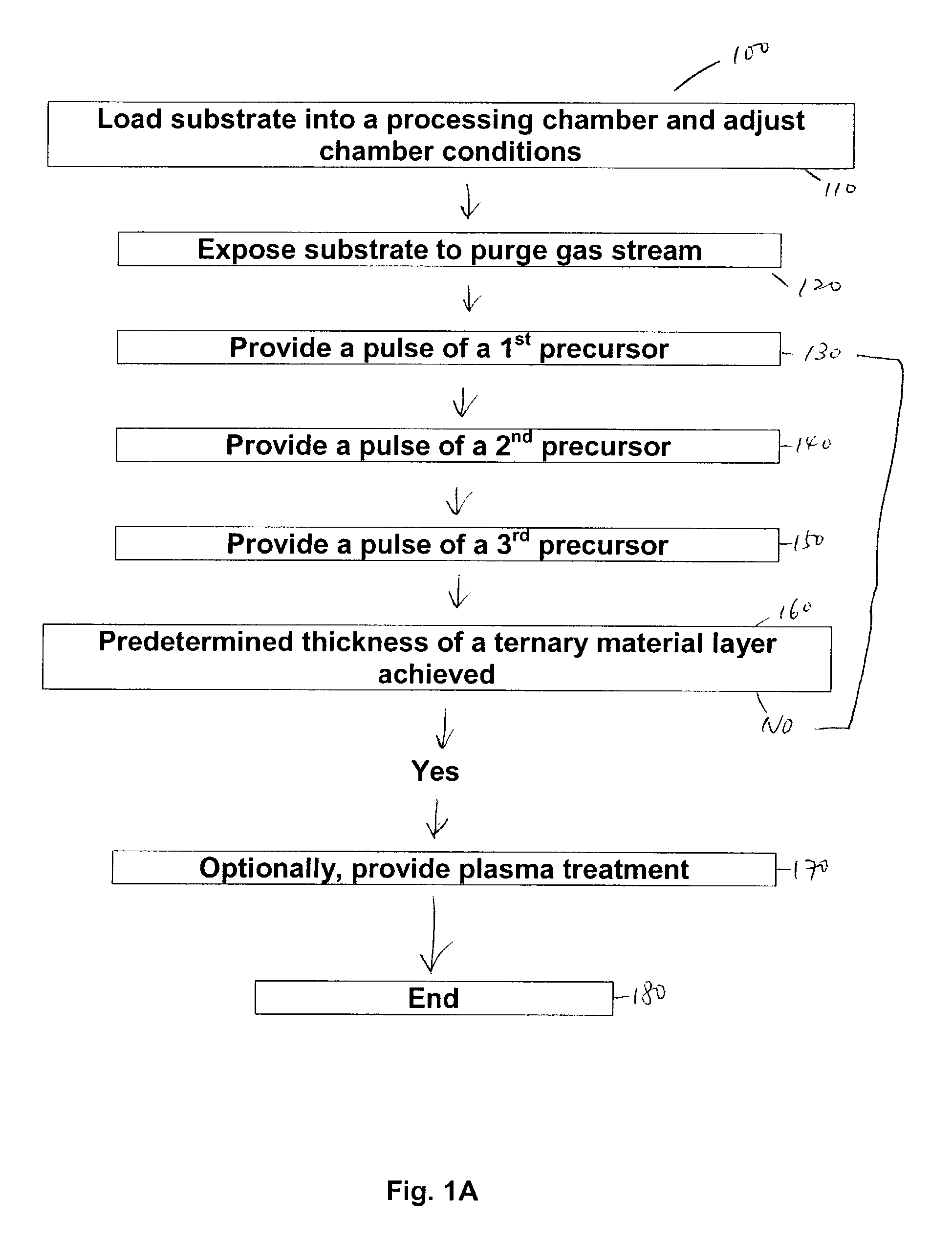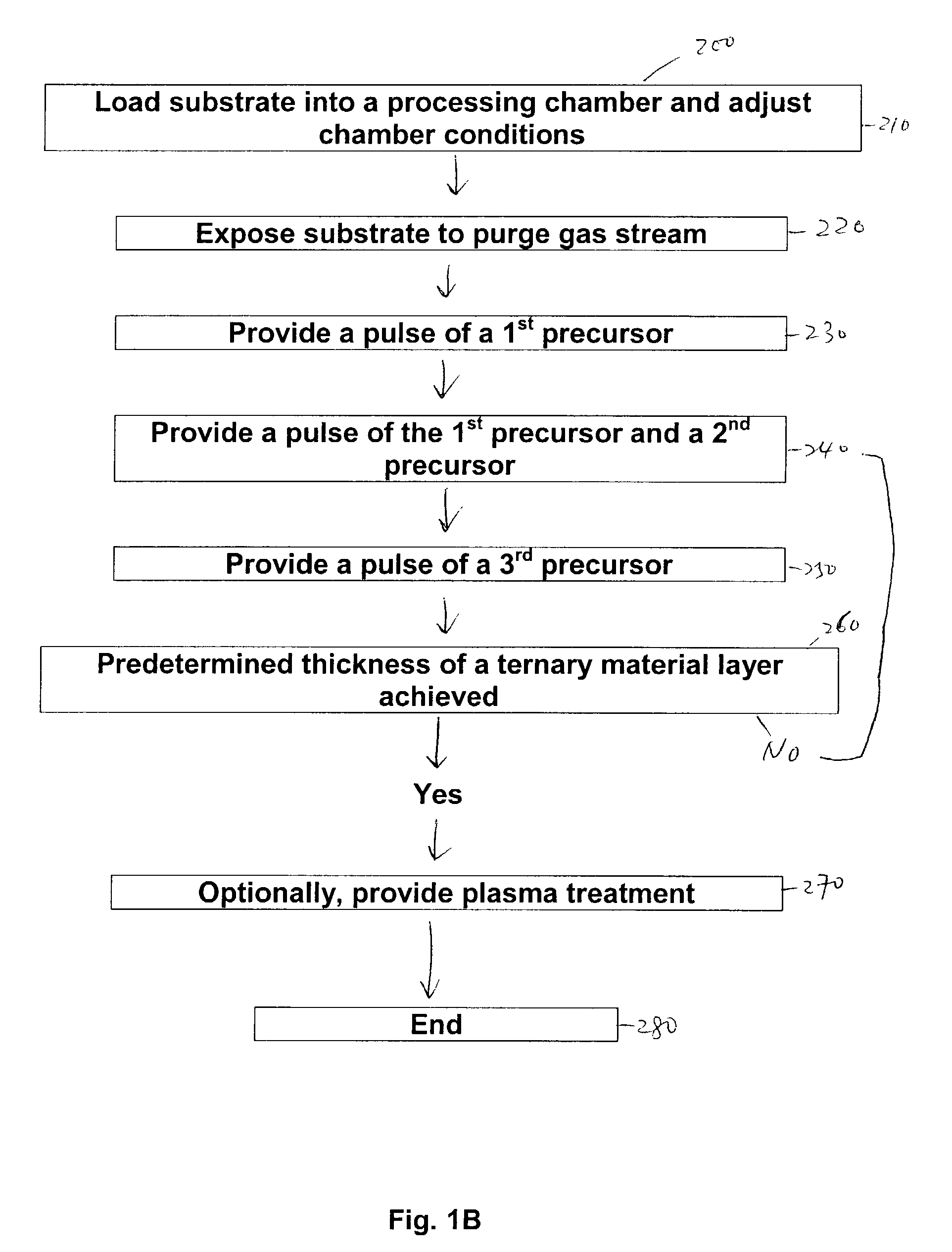Cyclical deposition of refractory metal silicon nitride
- Summary
- Abstract
- Description
- Claims
- Application Information
AI Technical Summary
Benefits of technology
Problems solved by technology
Method used
Image
Examples
example a
[0101]FIG. 4 is a comparison of the results of two flow sequences similar to the flow sequence 100 in FIG. 1A where three precursors are sequentially introduced into the flow sequence to form a tantalum silicon nitride layer. The difference between these two flow sequences was the order of the second and the third precursors. The precursors in these two flow sequences were ammonia used as the first precursor, and silane and pentakis (ethylmethylamino) tantalum (PEMAT) used as the second and the third precursors or vice versa. The two flow sequences were performed at about 215° C. chamber temperature. As a test, delivery of the ammonia was at a flow rate of about 500 sccm and a deposition pressure of about 10 Torr for a pulse of about 10 second. Delivery of the PEMAT was at a flow rate of about 200 sccm for a pulse of about 10 second, with an argon carrier gas of a deposition pressure of about 5 Torr. Delivery of the silane was at a flow rate of about 50 sccm for a pulse of about 10 ...
example b
[0104]The results performed by a flow sequence similar to the flow sequence 400 in FIG. 1D form a titanium nitride layer prior to the formation of a titanium silicon nitride layer are summarized below. The precursors used were ammonia as the first precursor, tetrakis (diethylamino) titanium (TDMAT) as the second precursor, and silane as the third precursor.
[0105]In FIG. 5A, the flow sequence is performed at various temperatures between about 150° C. and about 350° C. Decomposition of the titanium nitride layer as measured by X-ray fluorescence (XRF) counts in kilocounts per second (kcps) is shown as a function of the temperature of the heater for heating up the chamber. The results suggest that deposition is better at a temperature of about 250° C. or less because decomposition of the TDMAT precursor as indicated by the X-ray fluorescence (XRF) counts starts at a temperature of about 250° C. or more. The decomposition is not as severe when a longer duration of a pulse of a purge gas...
PUM
| Property | Measurement | Unit |
|---|---|---|
| Refractory | aaaaa | aaaaa |
Abstract
Description
Claims
Application Information
 Login to View More
Login to View More - R&D
- Intellectual Property
- Life Sciences
- Materials
- Tech Scout
- Unparalleled Data Quality
- Higher Quality Content
- 60% Fewer Hallucinations
Browse by: Latest US Patents, China's latest patents, Technical Efficacy Thesaurus, Application Domain, Technology Topic, Popular Technical Reports.
© 2025 PatSnap. All rights reserved.Legal|Privacy policy|Modern Slavery Act Transparency Statement|Sitemap|About US| Contact US: help@patsnap.com



